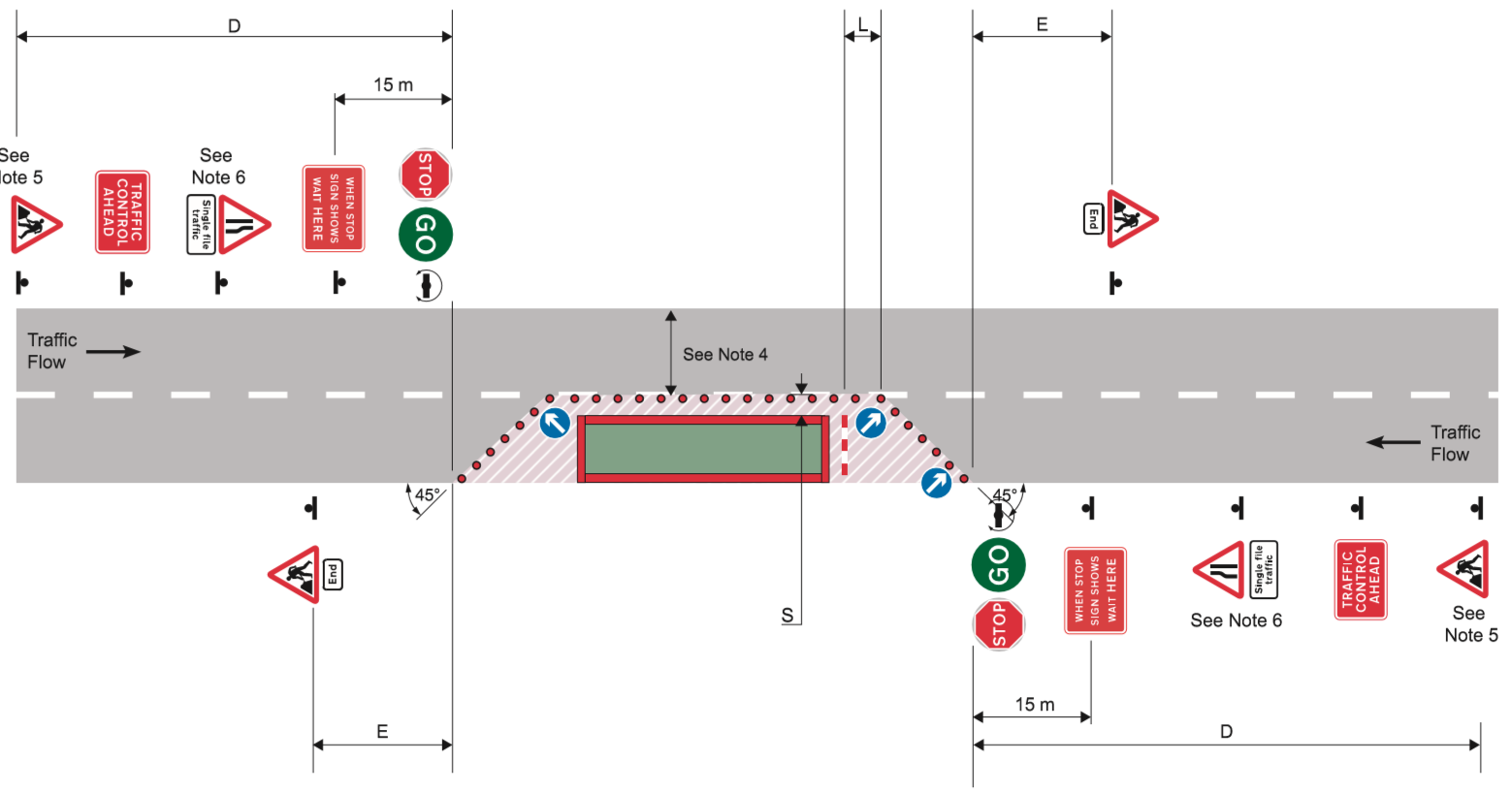Remotely controlled Stop/Go boards should be used where possible. When these boards are used, all the following conditions must be met:
- the distance between the ‘Stop/Go’ boards is no more than 200 metres;
- use of the boards is restricted to daylight hours;
- an unobstructed view of both approaches is maintained;
- the operative is less than 100 metres from both boards; and
- traffic flow is less than 850 veh/h.


You can use manually rotated Stop/Go boards under the following circumstances:
| Coned area length (metres) | Maximum two-way traffic flow | |
|---|---|---|
| Vehicles per 3 minutes | Vehicles per hour | |
| Up to 100 | 70 | 1400 |
| Up to 200 | 63 | 1250 |
| Up to 300 | 53 | 1050 |
| Up to 400 | 47 | 950 |
| Up to 5400 | 42 | 850 |
The signing you will need is shown in the figure below:
 Notes
Notes
- For numbers and minimum size of cones, and dimensions D, L, S and E, see table in the Setting out site section of this Code.
- An information board (omitted here for clarity) must be displayed.
- Stop/Go boards should be placed where they will be in full view of approaching drivers. They may be located on either side of the carriageway.
- See the Traffic control section of this Code for guidance on unobstructed width past the works.
- A supplementary distance plate is required for roads with a speed limit of 50 mph or more.
- For roads with a speed limit of 50 mph or more an assessment should be made as to whether ‘for’ and a distance should be included on a supplementary plate.
Manually rotated boards should only be used where the operator can be located in a position of safety (which must not be within the safety zone), and the works length or traffic flow prohibits the use of remotely operated boards. They can also be used if a risk assessment has determined that remotely operated boards are not appropriate. The reasons for not using remotely operated boards should be documented.
If the site length for manually rotated boards is 20 metres or less, then a single board positioned at one end or in the middle may be used, provided that it can be clearly seen from both directions. If two boards are used, then the operative showing ‘Go’ to oncoming traffic will be the one to control the change of traffic flow. Adequate time must be allowed for vehicles to clear before the other board is reversed to show ‘Go’, with both boards displaying ‘Stop’ while the shuttle lane clears.
Where two boards are in use and the operatives are not in direct line of sight, then two-way radio communication between operators must be used. When manually rotated boards are in use at night, they must be directly illuminated uniformly across the sign face. Partial illumination is not permitted, nor is intermittent illumination. Stop/Go boards must not be used where there is an uncontrolled junction joining the shuttle lane.
Warning: When the Stop/Go boards are to be used at or near a railway level crossing, consult your supervisor, manager or other competent person.
